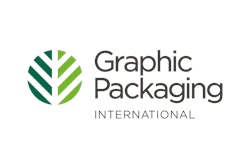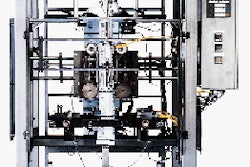A buck seemed like a lot to pay when all we expected was a 12-oz can of Coke. But the big bottle was an unexpected pleasure, and we certainly enjoyed it on the drive home. Around the country, weary road warriors are getting an even bigger packaging surprise from certain Pepsi-Cola can vending machines-Frito-Lay snacks in cans (see Packaging World, Sept. '97, p. 4). PepsiCo's cross-over packaging/branding/vending tactic is one of the more creative current marketing strategies involving packaging. For Pepsi, which owns Frito-Lay and thousands of can vending machines around the country, canned snacks are a masterful marketing stroke that leverages the company's packaging expertise and its unique distribution channel. Whomever it might consider its snack food competitors to be, PepsiCo's venture into canned snacks is as startling as it is likely to be effective in selling a broadened range of Pepsi and Frito-Lay products. Pepsi/Frito-Lay may have gotten the notion to can snacks from a former snack competitor, Anheuser-Busch. A-B's Eagle snack line (a money-losing venture it eventually shut down) was packaged in cans (albeit composite cans) meant to be handled by its route truck drivers. Wherever the idea came from, Pepsi/Frito-Lay's decision to pack snacks in beverage cans and use vending machine route drivers to load them into beverage can vending machines effectively marshals the corporation's resources. While all the operational snags have not yet been ironed out, for consumers, finding snacks in cans sold in vending machines is a pleasant and appealing surprise. The element of surprise is an effective packaging strategy being used by other marketers as well. A good example of product/packaging synergy with an element of surprise is the addition of CapriSun drink pouches to trays of Oscar Mayer Lunchables. By combining two of its brands, Kraft makes it unnecessary for lunchers to look elsewhere for something to drink. On the extreme end of the unexpected packaging scale are talking (or musical) containers. First tried by Coors Brewing Co. a couple of years ago, packages that tell consumers they've won prizes are now captivating consumers in the U.S., Canada, Latin America and Europe, selling a wide assortment of products from breakfast cereals and pasta mixes to chilled orange juice, mayonnaise and carbonated beverages. Lending voice-and, in some cases, music-to these containers are miniature speakers hidden in bottle and jar closure liners, easy-open can ends and carton sidewalls. Riverside Technologies Intl. (Wilton, CT) is the genius behind many of these vocal packaging elements. But you don't need to put computer chips in your cans to draw attention to them. During the current National Football League season, Campbell Soup Co. is getting second looks for its canned Chunky soups by putting a picture of Green Bay Packers defensive lineman Reggie White on them. To give its Signature line of soups distinction, Campbell puts them in proprietary glass jars that almost jump off the shelf against the sea of steel cans that dominate the category. A French confectioner is attracting market attention (and increasing sales) for its candied peanuts (usually packaged in flexible film pouches or metal cans) by showing them off in a distinctive, reverse-tapered clear PET jar with a hexagonal footprint and a 100-mm polypropylene closure. The container is designed and produced by PET Power BV (Etten-Leur, Holland). Back in the states, Coors Brewing Co. has some surprising packages in store for the coming holiday seasons. For Thanksgiving, the brewer is combining cause-related marketing with a series of four collectible cans featuring different images of actor John Wayne. Point-of-purchase materials carry Wayne's image and the tag line, "Pick it up, Pilgrim." Secondary packages are flagged with the John Wayne Cancer Institute logo and toll-free telephone donation number. Then, for the year-end gift-giving holiday season, Coors will be packaging its canned beers in 12-, 18- and 24-can "gift tag" display cases. Produced by Graphic Packaging Corp. (Wayne, PA), cases incorporate a small die-cut hole in their faces. The hole is designed to accommodate an adhesively attached snowflake-shaped gift tag with a battery-powered light. Tags will be added to the cases as displays are set up. Turning on the light, distributors push the battery on the back of the tag through the die-cut hole, uniformly positioning the tag and permitting it to be mounted flush with the case. BuzTronics, Inc. (Indianapolis, IN) produces the lights, which are designed to blink for up to 30 days. In these show-and-tell times, packages that merely contain and identify their contents are taken for granted and easily overlooked. Packages (with or without electronic accessories) that break category paradigms-bags of breakfast cereal, multipacked plastic cups of salsa, plastic jugs of kitty litter, yogurt in pouches, candy in squeeze tubes, and so on-have a distinct marketing advantage as long as they are fresh and surprising. So if you think your tubbed sauce is becoming invisible in the cooler, start thinking pouch or tube instead-anything to heighten its visibility.
Pleasing consumers with unexpected packaging
Around our way, a Coca-Cola vending machine at the Cleveland Zoo recently surprised my wife and me by delivering a 20-oz contour PET bottle after forcefully pulling a dollar bill out of our hands.
Sep 30, 1997
Companies in this article
Videos from Graphic Packaging International
Machinery Basics
Researched List: Engineering Services Firms
Looking for engineering services? Our curated list features 100+ companies specializing in civil, process, structural, and electrical engineering. Many also offer construction, design, and architecture services. Download to access company names, markets served, key services, contact information, and more!
Download Now
The AI revolution in packaging robotics is here
Robots that see variations, adjust grip pressure automatically, accept plain-English commands, and predict their own maintenance. Discover how AI is transforming packaging operations.
Read More
Downloads























